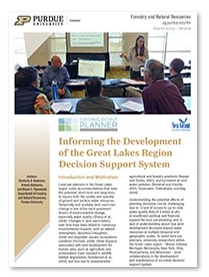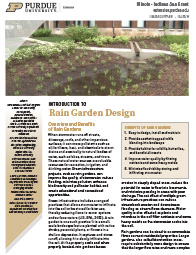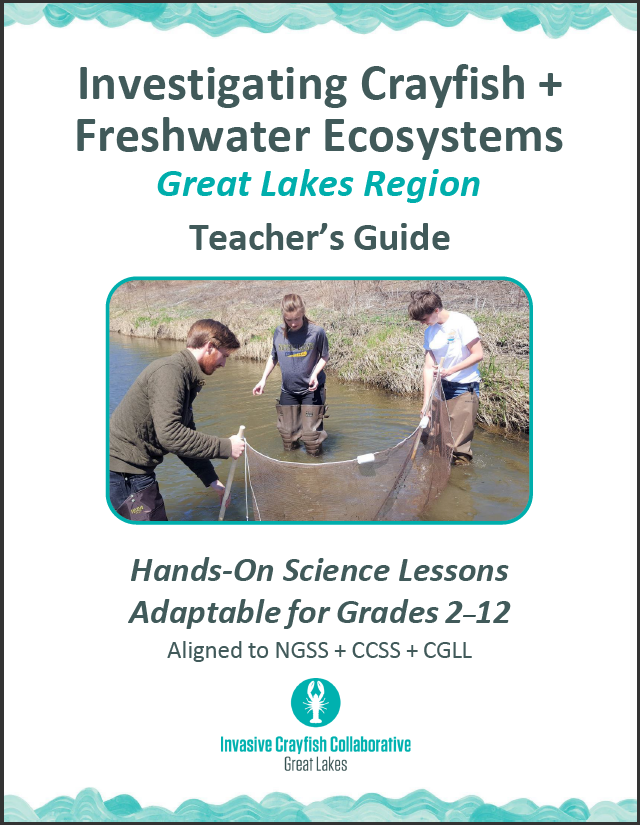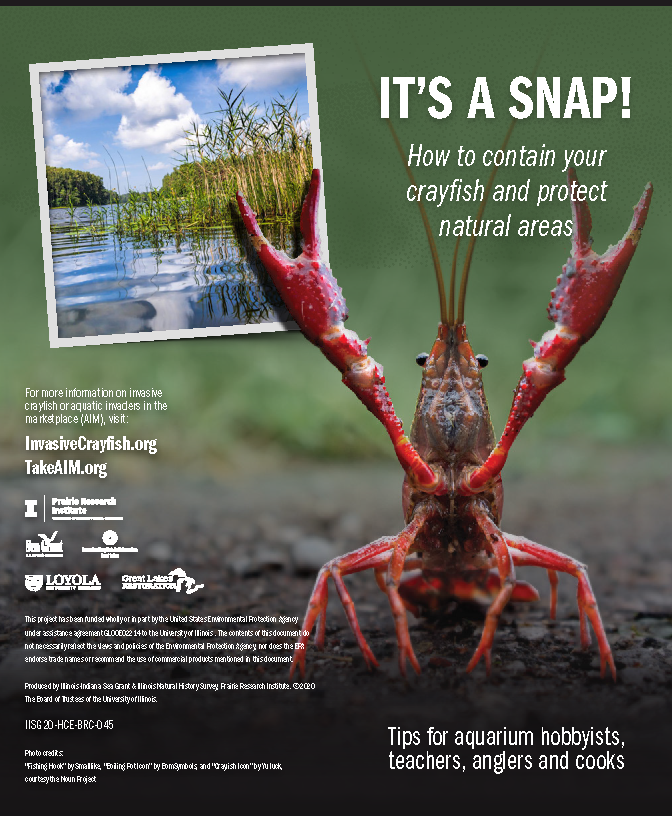Results
Year: 2020
Land use planners in the Great Lakes region make recommendations that can affect the quality and quantity of ground and surface water resources. Challenges include a lack of up-to-date data, and insufficient political and financial support. In this publication, university researchers in the Great Lakes region show how collaboration led to development and maintenance of an online decision support system.
Document is available from the Purdue Extension Education Store at, https://edustore.purdue.edu/fnr-601-w.html.
Year: 2023
A rain garden is a green infrastructure project that can improve the quality of stormwater, minimize pollution, and enhance biodiversity and pollinator habitat. Purdue, Iowa State and Illinois-Indiana Sea Grant researchers explain how to site, size, design, install and maintain a rain garden, and provide advice on plant selection, too. Document is available for download in the Purdue Extension Ed-Store.
Year: 2018
Invasive crayfish pose a substantial threat to aquatic habitats in the Great Lakes Region because of their ability to reduce habitat quality and dramatically alter aquatic food webs. Currently, efforts to prevent the introduction and spread of invasive crayfish consist largely of reducing the size of existing populations and encouraging people to refrain from releasing crayfish into new bodies of water. The ICC focuses on improving upon our collective management and outreach capabilities.
For more detailed information, visit Invasive Crayfish Collaborative
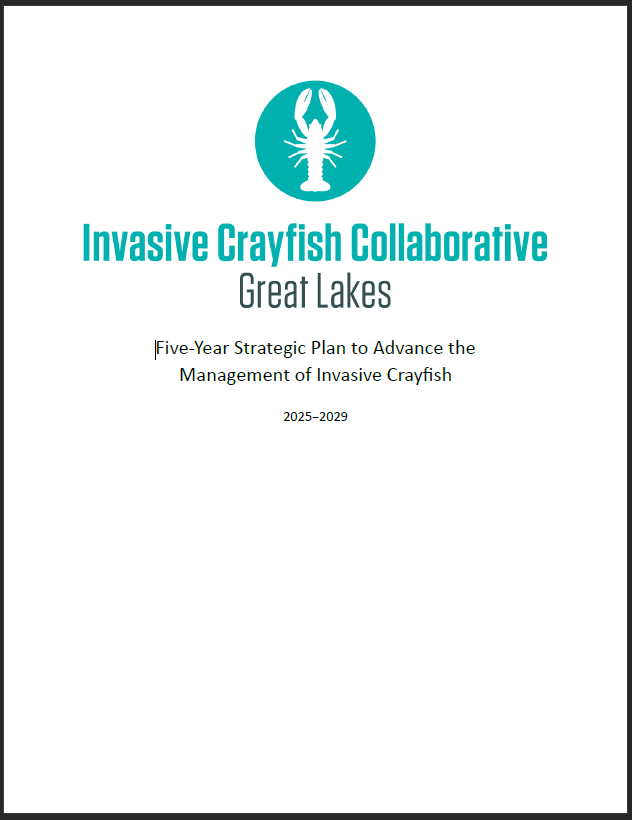
File Type: pdf
File Size: 739.54 KB
Year: 2024
Invasive crayfish pose a significant and ongoing threat to aquatic ecosystems in the Laurentian Great Lakes (GL) region. Coordination and communication among crayfish stakeholders are crucial for effective management. The Invasive Crayfish Collaborative (ICC) brings industry, science, and land management stakeholders together to enhance the management of invasive crayfish in the GL. To systematically guide the direction of the ICC and help facilitate the coordination of research, collaboration, and outreach, a five-year strategic plan was developed. This plan, informed by data from ICC surveys, workshops, and external feedback, outlines priority projects designed to equip stakeholders and partners with the necessary resources to effectively tackle the challenges presented by invasive crayfish. This plan plays a key role in highlighting the collective vision for crayfish management and ultimately contributes to the protection of native species and preservation of our aquatic ecosystems.
Download File
Year: 2025
The use of live crayfish in classrooms has been identified as a pathway for the introduction of invasive crayfish into our local waterways. To address this issue, the Investigating Crayfish and Freshwater Ecosystems curriculum was developed to teach students about Great Lakes ecosystems, the significance of native crayfish, and the ecological threats posed by invasive crayfish. It contains nine lesson plans aligned to Next Generation Science Standards, Common Core State Standards, and Center for Great Lakes Literacy Principles. The curriculum is best suited for students in grades 6-12 but offers numerous adaptations/extensions to meet the divergent needs of students in grades 2–5.
This document is available on the Invasive Crayfish Collaborative website: https://invasivecrayfish.org/crayfish-curriculum/
Page 21 of 41
Note: Some older Illinois-Indiana Sea Grant publications have not yet been restructured into ADA compliant formats. We are actively working on this. If you are having difficulty accessing a particular item in one of our databases, please contact iisg@purdue.edu with the name of the item and its URL for further assistance.
